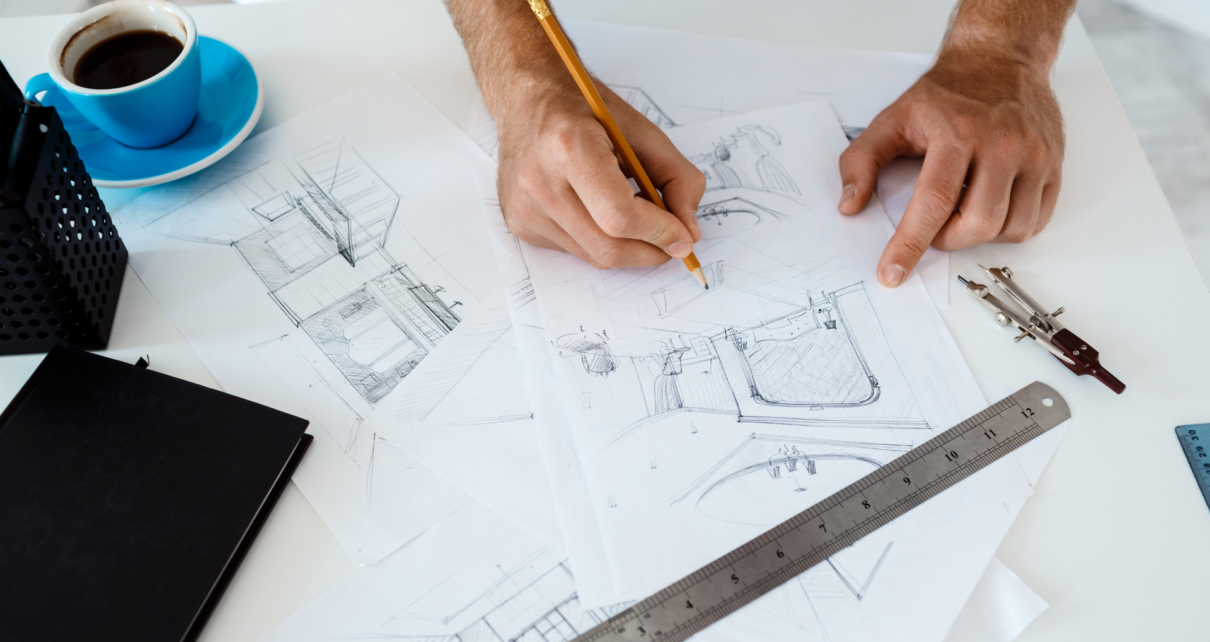Millwork drafting stands as the backbone of exceptional commercial interiors, transforming raw concepts into tangible, functional designs. This meticulous process blends creativity with technical precision, ensuring that every custom cabinet, countertop, and architectural detail aligns with a project’s vision. For commercial spaces—whether retail stores, offices, or hospitality venues—millwork drafting delivers the craftsmanship that elevates aesthetics and functionality, creating environments that leave lasting impressions.
The journey from initial idea to final installation is complex, requiring a deep understanding of materials, spatial dynamics, and industry standards. Skilled drafters act as architects of detail, translating client needs into precise blueprints that guide fabrication and installation. This process not only demands technical expertise but also an ability to anticipate challenges, optimize workflows, and meet tight deadlines, all while maintaining the highest quality standards.
Businesses seeking standout commercial spaces rely on millwork drafting to achieve seamless integration of form and function. From modern office lobbies to luxurious hotel interiors, well-executed millwork can define a brand’s identity and enhance user experience. Understanding the step-by-step process of millwork drafting empowers stakeholders to make informed decisions, ensuring projects are completed on time, within budget, and to exact specifications.
Understanding Millwork Drafting
Millwork drafting involves creating detailed technical drawings and specifications for custom architectural elements, such as cabinetry, paneling, and decorative trim. These drawings serve as the blueprint for fabricators, ensuring every piece is crafted with precision. In commercial projects, where scale and complexity increase, drafting becomes even more critical, as it bridges the gap between design vision and practical execution.
The process begins with a thorough understanding of the project’s scope, including the client’s aesthetic preferences, functional requirements, and budget constraints. Drafters use advanced software like AutoCAD or Revit to produce detailed 2D and 3D models, incorporating measurements, materials, and joinery techniques. These drawings must comply with building codes and industry standards, ensuring safety and durability in high-traffic commercial environments.
Effective millwork drafting also considers the end user. For example, a retail store may require durable, customer-facing displays, while an office might prioritize ergonomic storage solutions. By aligning designs with these needs, drafters create spaces that are both visually appealing and highly functional, enhancing the overall user experience.
Step 1: Project Assessment and Client Collaboration
The foundation of successful millwork drafting lies in a comprehensive project assessment. This initial phase involves close collaboration with clients, architects, and designers to define goals and expectations. Detailed discussions about the space’s purpose, aesthetic preferences, and functional requirements set the stage for a tailored drafting process.
Site visits play a crucial role in this step. Drafters measure the space, assess structural elements, and identify potential challenges, such as irregular walls or limited access points. These insights inform the design, ensuring that millwork pieces fit seamlessly into the environment. Additionally, understanding the client’s brand identity—whether sleek and modern or warm and traditional—guides material and finish selections.
Collaboration extends to budget planning. By aligning design ambitions with financial constraints, drafters propose solutions that balance quality and cost. This step ensures that all stakeholders are on the same page, minimizing revisions and delays later in the process.
Step 2: Conceptual Design and Visualization
Once the project’s scope is clear, drafters move to the conceptual design phase. This stage transforms ideas into visual representations, often using 3D modeling software to create realistic renderings. These models allow clients to visualize the final product, from intricate cabinet details to expansive wall paneling, before fabrication begins.
Conceptual designs also incorporate material choices, such as wood, laminates, or metal, each selected for durability, aesthetics, and cost. For commercial projects, drafters prioritize materials that withstand heavy use while maintaining visual appeal. For instance, a high-end restaurant might opt for rich walnut paneling, while a retail space may choose cost-effective, durable laminates.
Feedback loops are essential during this phase. Clients review renderings and provide input, allowing drafters to refine designs. This iterative process ensures that the final drawings align with the client’s vision while adhering to practical constraints, such as space limitations or building regulations.
Step 3: Detailed Technical Drawings
With the conceptual design approved, drafters create precise technical drawings, often referred to as shop drawings. These documents include detailed measurements, material specifications, and assembly instructions, serving as the roadmap for fabricators. Accuracy is paramount, as even minor errors can lead to costly rework during fabrication or installation.
Shop drawings include multiple views—plan, elevation, and section—along with annotations for joinery, hardware, and finishes. For complex commercial projects, drafters may also produce exploded views to illustrate how components fit together. These drawings ensure that every piece, from a custom reception desk to a built-in shelving unit, is fabricated to exact specifications.
Advanced software enhances this process by enabling drafters to simulate real-world conditions, such as load-bearing capacities or material stress points. This technical rigor ensures that the millwork not only looks stunning but also performs reliably in demanding commercial settings.
Step 4: Coordination with Fabrication Teams
Effective millwork drafting extends beyond drawings to collaboration with fabrication teams. Drafters work closely with fabricators to ensure that designs are feasible and cost-effective to produce. This coordination involves reviewing shop drawings, discussing material availability, and addressing potential manufacturing challenges.
In commercial projects, where timelines are often tight, clear communication is critical. Drafters provide fabricators with detailed cut lists, assembly sequences, and finishing instructions to streamline production. Regular check-ins during fabrication help catch discrepancies early, ensuring that the final product matches the approved design.
This phase also involves quality control. Drafters may visit fabrication shops to inspect prototypes or review samples, ensuring that materials and craftsmanship meet project standards. This hands-on approach minimizes errors and ensures a smooth transition to the installation phase.
Step 5: Installation Oversight and Final Adjustments
The final step in millwork drafting is overseeing installation to ensure that the fabricated pieces are installed correctly. Drafters often work on-site, collaborating with contractors to address any challenges, such as misaligned walls or unexpected obstacles. Their expertise ensures that the millwork integrates seamlessly into the space.
During installation, drafters verify that every piece aligns with the shop drawings, checking for proper fit, finish, and functionality. If adjustments are needed—such as trimming a panel or modifying a joint—they provide real-time guidance to ensure consistency with the original design.
Post-installation, drafters conduct a final walkthrough with clients, addressing any concerns and ensuring satisfaction. This step completes the journey from concept to reality, delivering a commercial space that is both functional and visually striking.
Optimizing Millwork Drafting for Success
To maximize the impact of millwork drafting, several best practices come into play. First, leveraging advanced technology, such as Building Information Modeling (BIM), enhances accuracy and collaboration across teams. BIM allows drafters to create dynamic models that integrate with other project elements, reducing conflicts and improving efficiency.
Second, prioritizing sustainability can elevate a project’s appeal. Choosing eco-friendly materials, such as reclaimed wood or low-VOC finishes, aligns with modern commercial trends and appeals to environmentally conscious clients. Finally, maintaining open communication with all stakeholders—clients, architects, fabricators, and contractors—ensures that the project stays on track and meets expectations.
Closing Thoughts
Millwork drafting services for commercial projects is a blend of art and science, requiring precision, creativity, and collaboration. From the initial assessment to the final installation, each step plays a vital role in transforming a vision into a tangible reality. By focusing on client needs, leveraging advanced tools, and maintaining rigorous quality standards, drafters deliver spaces that inspire and endure.
The impact of well-executed millwork extends beyond aesthetics. It enhances functionality, reinforces brand identity, and creates environments that resonate with users. Whether crafting a sleek office reception or an inviting retail display, millwork drafting sets the stage for commercial success. Businesses that invest in this process gain not only stunning interiors but also spaces that drive engagement and leave a lasting impression. Embracing these steps ensures that every project achieves its full potential, blending beauty with practicality in perfect harmony.




